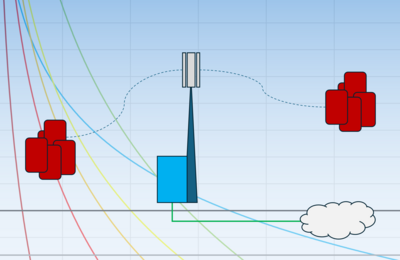The study on hand is one of four studies in the context of the evaluation of the TKMV, which the consortium of wik and zafaco prepared for the German Federal Network Agency.
The focus of this report is on identifying, describing and evaluating the available transmission technologies (wired, satellite-based and mobile radio-based) with regard to their suitability to fulfil the requirements of the TKMV in terms of universal service requirements. These are categorised into different forms and subsequently analysed with regard to their quality characteristics (data transmission rate and latency).
In the case of wired technologies, implementations based on copper-wire pair, coaxial cable and fibre-optic are considered, whereby the various technologies are analysed for the individual transmission media (xDSL profiles, DOCSIS generations and various fibre-optic connection technologies).
The satellite-based technologies analysed include geostationary, medium and low earth orbit variants (GEO, MEO and LEO).
When analysing mobile radio-based technologies, the mobile radio generations are subdivided from 2G to 5G, and Fixed Wireless Access (FWA), Worldwide Interoperability for Microwave Access (WIMAX) and High Altitude Platform Station (HAPS) are also considered.
When analysing the various technologies, particular attention is paid to investigating the factors that determine the distance and the sharing aspects that reduce the available data transmission rate.

Suitability of different technologies to provide universal services
In June 2022, the German Telecommunications Minimum Supply Ordinance (TKMV) defined minimum technical requirements for the internet access service (data transmission rate in download and upload and maximum tolerated latency). This report analyses which fixed network-based, satellite-based or mobile radio-based transmission technologies are generally suitable for this purpose.


![[Translate to English:] Dr Gabriele Kulenkampff](/fileadmin/_processed_/3/3/csm_Gabi-Kulenkampff_195c6a15d3.jpg)